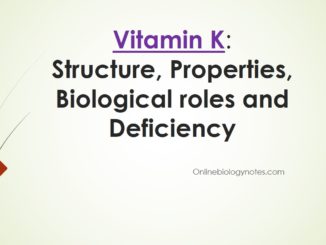
Vitamin K: Structure, Properties, Biological roles and Deficiency
Fat soluble vitamin that play a major role in post translational modification. Vitamin K also acts as a co-enzyme for carboxylase enzyme. It is the […]

Fat soluble vitamin that play a major role in post translational modification. Vitamin K also acts as a co-enzyme for carboxylase enzyme. It is the […]
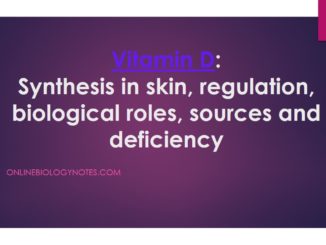
Vitamin D is another fat-soluble vitamin. It has sterol like structure and therefore function like steroid hormones. 7-dehydrocholesterol is the animal source of Vit-D which […]
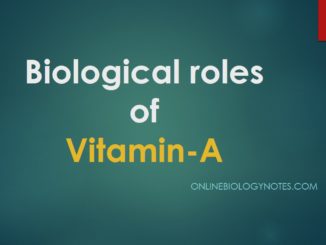
Vitamin A comprises of a group of compounds collectively called retinoids which includes retinal, retinol, retinoic acid and a pro-vitamin A obtained from plant source […]
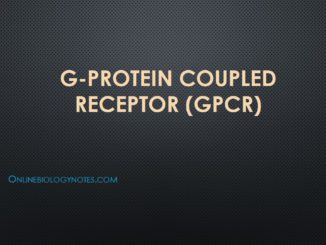
G-protein coupled receptors (GPCRs) G protein–coupled receptors (GPCRs) are receptors that are closely related with a member of the guanosine nucleotide–binding protein (G protein) family. […]
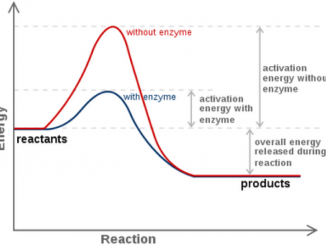
Rate of enzyme reactions The rate of enzyme reaction is measured by the amount of substrate changed or amount of product formed during a period […]
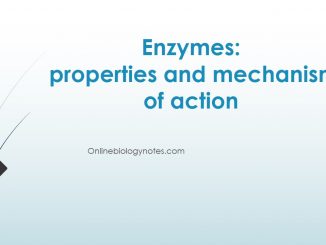
Enzymes Enzymes are biological catalyst that catalyze biochemical reaction during metabolism but itself remain unaffected during the process of catalysis. Enzymes accelerate the rate of […]
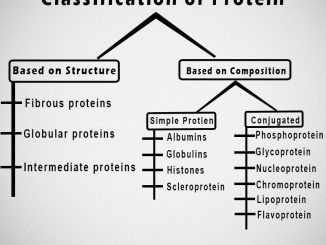
I. Classification of protein on the basis of Structure and composition: • This Classification of protein is based on shape or structure and composition. They […]
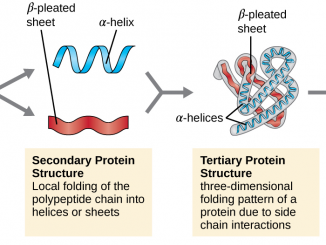
Proteins are structurally organized into four level; primary structure, secondary structure tertiary structure and quaternary structure. 1. Primary structure of protein: Primary structure of protein […]
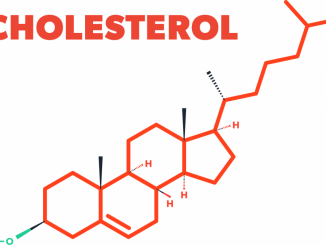
Cholesterol Cholesterol is a steroid alcohol present in animal tissue. It is the structural component of all cell membranes and regulating fluidity. It is also […]
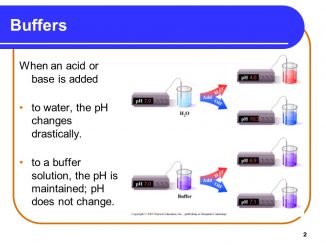
Buffer: Buffers are defined as solutions which resists small change in pH by adding small amount of acid or base. A buffer usually consists of […]
Copyright © 2024 | WordPress Theme by MH Themes